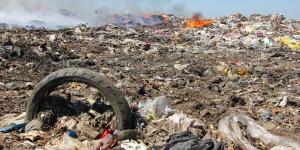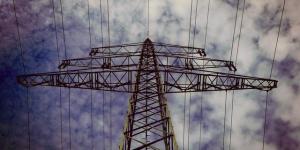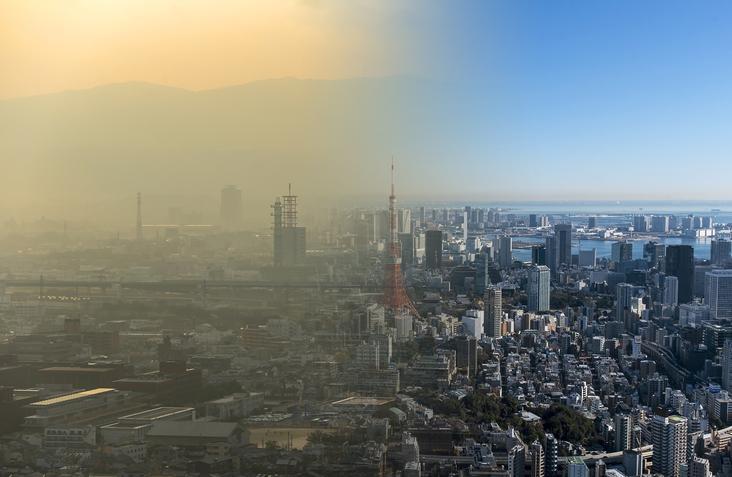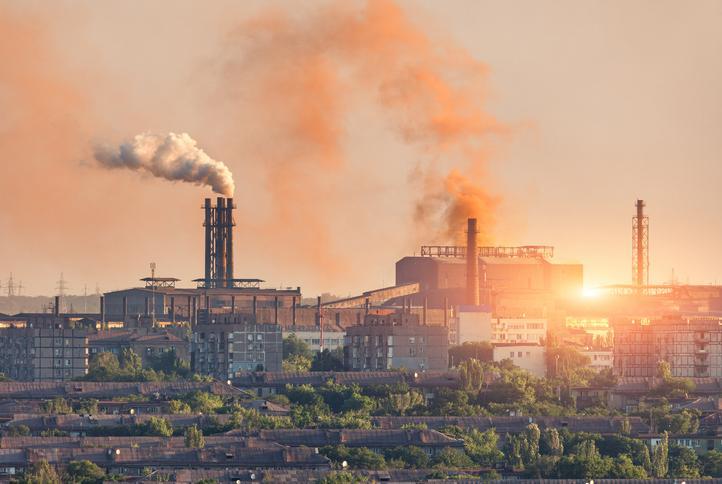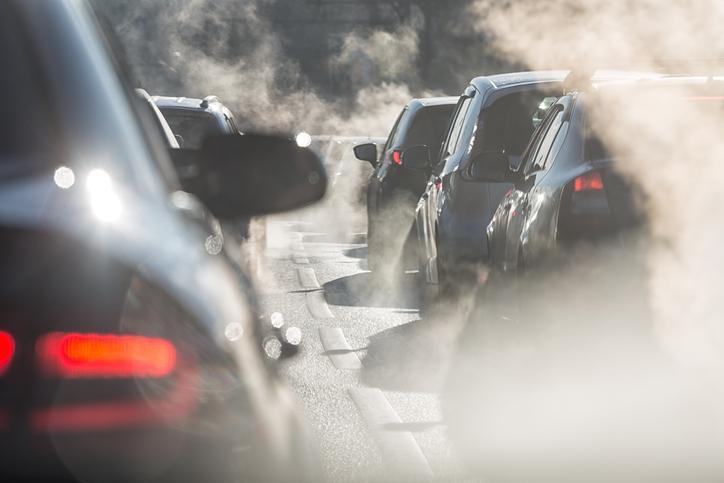What Are the Different Types of Air Pollution?


Air quality is a critical aspect of environmental health, impacting human well-being and ecosystems alike. Understanding the diverse forms of air pollution is essential for addressing its detrimental effects and safeguarding our collective future. Did you know that air pollution shortens lives by an average of several years globally?
This article by thedailyECO explores the 6 different types of air pollution, their sources, health impacts, and control measures.
What is air pollution?
Air pollution refers to the presence of harmful or excessive substances in the atmosphere that negatively affect human health, the environment, and climate. These substances can be gases, liquid droplets, or solid particles. While some air pollution comes from natural sources like volcanic eruptions or dust storms, the majority comes from human activities.
Air pollution is a major threat to human health, causing respiratory problems, heart disease, cancer, and even premature death. It also damages ecosystems, harming plants and animals. Additionally, air pollution contributes to climate change by trapping heat in the atmosphere. The economic costs of air pollution are significant, with healthcare expenses and lost productivity taking a toll on societies worldwide.
Types of air pollution
The 5 main types of air pollution we will explore in detail are:
- Particulate Matter (PM)
- Ground-Level Ozone (O3)
- Nitrogen Oxides (NOx)
- Sulfur Oxides (SOx)
- Carbon Monoxide (CO)
Want to delve deeper into the sources of air pollution? Our next article explores the environmental impact of airplanes and the types of pollutants they emit.
Particulate matter (PM)
Particulate matter, or PM, comprises tiny particles suspended in the air. It's a complex mixture of tiny solid particles and liquid droplets suspended in the air that can't be seen with the naked eye. While larger PM irritates airways, the real danger comes from fine particles like PM2.5. These are incredibly small, about 25 times smaller than a red blood cell, allowing them to travel deep into the lungs and cause serious health problems.
While some PM comes from natural sources like wildfires, dust storms, volcanic eruptions, and sea spray, human activities are the major culprit. Vehicle emissions, particularly from diesel engines, are a significant source of PM, especially PM2.5. Incomplete combustion releases soot and other pollutants that contribute to air pollution. Also, factories, power plants, and other industrial facilities can release large amounts of PM through processes like cement production, mining, and burning fossil fuels.
Fortunately, there are steps we can take to reduce PM pollution. Regulations that limit PM emissions from vehicles and industries play a crucial role. Additionally, promoting cleaner fuels, stricter emission standards for cars and trucks, and implementing cleaner industrial processes can significantly decrease PM output.
Did you know there's a hidden form of pollution all around us? Our next article explores electromagnetic pollution, its sources, and potential health effects.

Ground-level ozone (O3)
Ground-level ozone (O3) might sound familiar, but unlike the ozone layer high in the atmosphere protecting us from harmful ultraviolet radiation, ground-level ozone is a harmful air pollutant.
This kind of pollution is the result of chemical reactions involving precursor pollutants. These precursors primarily include nitrogen oxides (NOx) and volatile organic compounds (VOCs), which are emitted from various sources such as vehicles, industrial facilities, and power plants.
When NOx and VOCs react with sunlight and heat, they undergo complex chemical transformations in the atmosphere, ultimately leading to the formation of ground-level ozone. This unwanted ozone becomes a major component of smog, the hazy layer often seen in polluted cities.
Exposure to ground-level ozone can result in a range of health problems, particularly for vulnerable populations such as children, the elderly, and individuals with respiratory conditions like asthma.
Fortunately, we can take steps to mitigate ground-level ozone pollution. Mainly, stricter regulations on vehicle emissions and industrial processes can significantly reduce NOx and VOC levels, the building blocks of ground-level ozone. Also, promoting cleaner-burning fuels for vehicles and cleaner technologies in industries can further decrease ozone precursors.

Nitrogen oxides (NOx)
Nitrogen dioxide (NO2) might not be the most well-known air pollutant, but it plays a significant role in urban air quality. This reddish-brown gas, often contributing to the hazy skies in polluted cities, comes from various sources and poses health risks.
The combustion of fossil fuels in vehicles and power plants is a major source of nitrogen dioxide emissions. In urban areas, traffic congestion and industrial activities are significant contributors to NO2 pollution. Additionally, agricultural practices and wildfires can release nitrogen oxides into the atmosphere, further exacerbating air quality issues. While NO2 itself isn't directly emitted in large quantities, it forms readily in the atmosphere from another culprit: nitric oxide (NO).
When inhaled, it can irritate the airways and lungs, leading to various health problems. Studies suggest NO2 exposure can also increase the risk of heart attacks and strokes, potentially by damaging blood vessels and promoting inflammation.
Fortunately, we can implement strategies to reduce NO2 emissions and improve air quality. For example, by implementing stricter regulations on vehicle emissions, promoting electric vehicles, and encouraging cleaner fuels can significantly reduce NO emissions from traffic.
It is also important to develop urban areas with better public transportation, pedestrian-friendly infrastructure, and green spaces can reduce car dependency and improve air quality. Designing cities with walkable neighborhoods, efficient public transportation systems, and green spaces can reduce the need for car travel and promote cleaner air.
Sulfur oxides (SOx)
Sulfur dioxide (SO2) might conjure images of volcanic eruptions, but this pungent gas also stems from human activities. While regulations have curbed its presence in many areas, SO2 pollution remains a concern, especially in regions reliant on fossil fuels. It is one of the most common pollutants released into the atmosphere and can have significant impacts on human health and the environment.
The primary culprit behind human-caused SO2 pollution is the combustion of fossil fuels with high sulfur content, particularly coal. Power plants and industrial facilities heavily reliant on coal release significant amounts of SO2 into the atmosphere. These emissions are often referred to as "flue gases," escaping through smokestacks and contributing to air pollution.
Exposure can cause coughing, wheezing, shortness of breath, and chest tightness. These symptoms can worsen existing respiratory conditions like asthma and chronic obstructive pulmonary disease (COPD). Not only that, but SO2 reacts with water vapor in the atmosphere to form sulfuric acid, a major component of acid rain. Acid rain damages ecosystems, forests, and even buildings.
To mitigate sulfur dioxide pollution and improve air quality, various methods and technologies have been developed, such as flue gas desulfurization. This is a process used in power plants and industrial facilities to remove sulfur dioxide from exhaust gases before they are released into the atmosphere. FGD systems typically use chemical scrubbers or other methods to absorb sulfur dioxide and convert it into less harmful compounds, such as gypsum or sulfuric acid.
As always, implementing stricter regulations on the sulfur content of fuels used in power plants, industries, and ships can further minimize SO2 pollution.
Curious how different fuels contribute to air pollution? Our next article dives into the debate of diesel versus gasoline, exploring which fuel type has a bigger impact on air quality.

Carbon monoxide (CO)
Carbon monoxide (CO) might seem like a simple molecule, but its presence in the air can have serious consequences. This colorless, odorless gas is often called the "silent threat" because it's undetectable by our senses yet can be deadly in high concentrations. Let's delve into the sources, health risks, and ways to combat CO pollution.
Carbon monoxide is generated when carbon-containing fuels such as gasoline, diesel, natural gas, and wood are burned in vehicles, power plants, industrial facilities, and household appliances. Incomplete combustion, caused by insufficient oxygen supply or inefficient burning conditions, leads to the production of carbon monoxide. Motor vehicles are a major source of carbon monoxide emissions, accounting for a significant portion of urban air pollution.
Unlike some pollutants that irritate the airways, CO poses a different kind of threat. Because CO has a high affinity for hemoglobin (the oxygen-carrying molecule in red blood cells), it displaces oxygen. This oxygen deprivation can lead to various health problems such as headaches, dizziness, nausea, and fatigue. However, in high concentrations, CO can deprive the body of vital oxygen, leading to loss of consciousness and even death.
Fortunately, we can take steps to reduce CO emissions and prevent CO poisoning, such as developing and adopting cleaner combustion technologies in vehicles and industrial processes can further minimize CO production. Also, regularly maintaining vehicles, generators, and gas appliances ensures proper combustion and prevents CO leaks. Additionally, proper ventilation is crucial to prevent CO buildup in enclosed spaces.
Other air pollutants
In addition to the primary air pollutants we've examined, a multitude of other unseen contaminants permeate the air we inhale.
- Volatile organic compounds (VOCs): emitted from paints, solvents, and some cleaning products, VOCs can contribute to ground-level ozone formation and irritate the airways.
- Lead (Pb): once a common gasoline additive, lead exposure can damage the nervous system, particularly in children, and hinder cognitive development.
- Polycyclic aromatic hydrocarbons (PAHs): formed during the incomplete combustion of organic materials like coal, wood, and tobacco, PAHs are linked to an increased risk of lung cancer.
- Mercury (Hg): released from coal-fired power plants and certain industrial processes, mercury can accumulate in the food chain, posing a risk to human health and ecosystems.
- Persistent organic pollutants (POPs): these man-made chemicals, like pesticides and industrial lubricants, resist degradation and can travel long distances, accumulating in the environment and posing a threat to wildlife and human health.
While these pollutants may not be as abundant as the major ones, their presence can still contribute to air quality problems and pose health risks.
Indoor air quality is another concern. Pollutants like mold, dust mites, secondhand smoke, and volatile organic compounds from building materials can create unhealthy environments within homes and buildings.
Intrigued by the fight against air pollution? Our next article explores a fascinating natural process called bioremediation, where living organisms clean up environmental contaminants.
If you want to read similar articles to What Are the Different Types of Air Pollution?, we recommend you visit our Pollution category.
- Celis, J. et al., (2007) Atmospheric air pollution by particulate matter in an intermediate city: the case of Chillán (Chile). Technological Information Magazine , Volume 18 (3), pp: 49-58.
- Rojano, R. et al., (2016) Dispersion of air pollutants (PM10, NO2, CO, VOCs and PAHs), emitted from a modular natural gas compression, treatment and measurement station. Technological Information Magazine , Volume 27 (5).
- Weitzenfeld, H. (1992) Air pollution and health in Latin America. Pan American Health Organization , Volume 112 (2), pp: 97-109.

